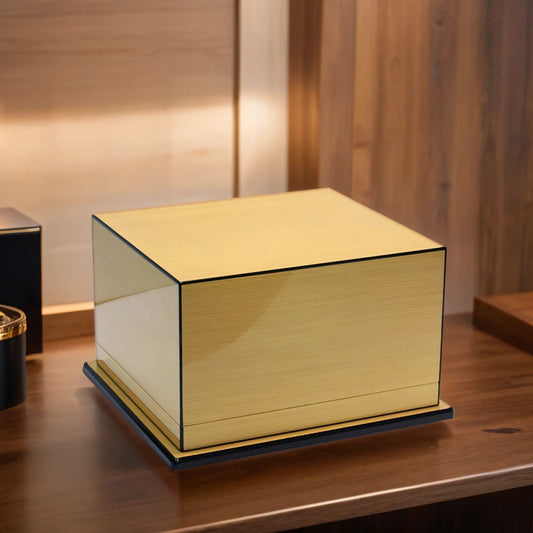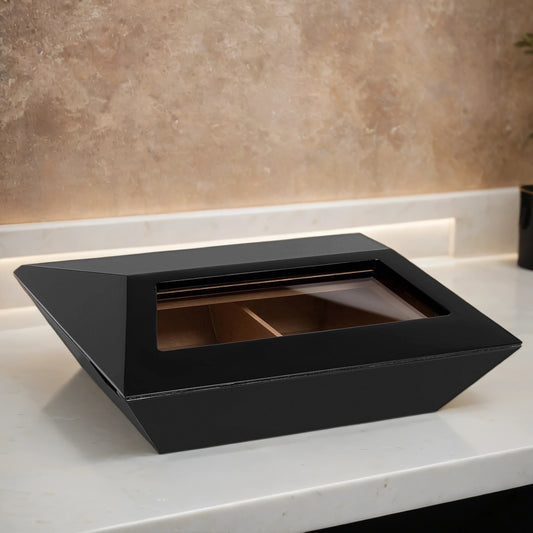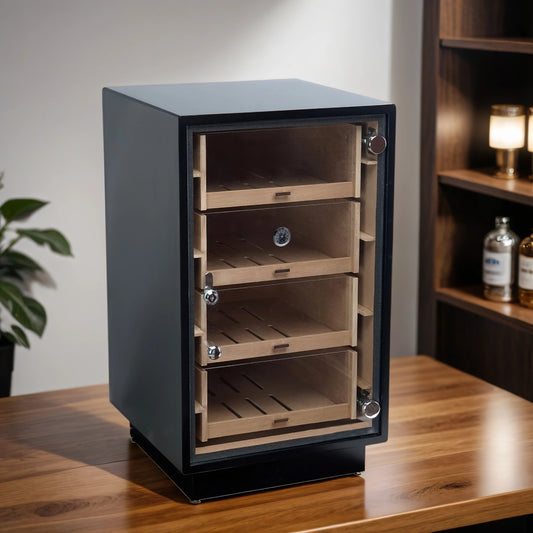
How to Rehydrate Cigars: Fixing Dried Out Cigars
There’s nothing worse than opening your prized humidor to find your cigars dry and lifeless. Whether your humidor malfunctioned or you forgot to check humidity levels, a dry cigar isn’t the end of the world—but it does call for immediate action. With some patience and proper technique, you can rehydrate cigars and restore their flavor, texture, and smoking quality. This guide walks you through proven methods, common pitfalls, and tips to prevent future dryness.
The Importance of Proper Humidity for Cigars
Cigars are living, breathing creations that require specific care to maintain their quality. The ideal relative humidity for cigars is between 65–72%. At this range, they retain their oils, burn evenly, and deliver the flavor you expect. When stored in proper conditions, cigars can last years and years in your humidor. When humidity drops below this sweet spot, cigars dry out, becoming brittle, cracked, and prone to burning too hot.
The rehydration process must be gradual to avoid damaging the cigar wrapper or altering its flavor. While it’s tempting to speed up the process, patience is your greatest tool when fixing a dry cigar.
Recognizing When Cigars Need Rehydration
Dry cigars are easy to spot. They may crack when handled, feel excessively hard, or burn unevenly when smoked. Completely dried-out cigars might even flake or crumble if you try to use your trusty cigar cutter. These cigars need urgent attention, but they’re not beyond saving. Even cigars that have lost much of their moisture can often be restored to a smokable state with the right techniques.
For cigars that are only slightly dry, the process will be quicker—perhaps a few days. However, for those that have dried out entirely, the rehydration process could take several weeks to a month.

Using Boveda Packs and a Sealed Container
Boveda packs are a foolproof solution for rehydrating cigars. These humidity-control packets release or absorb moisture to maintain a precise RH level, making them ideal for a gradual rehydration process.
Materials You’ll Need
- Boveda packs, starting at 62% RH
- Airtight container, such as a Tupperware container or humidor bag
- Hygrometer (optional, but highly recommended)
Step-by-Step Instructions
- Place your cigars in an airtight container, ensuring they’re spaced apart for even rehydration.
- Add a 62% RH Boveda pack to the container. This low starting point prevents over-saturating the cigars.
- Seal the container and store it in a cool, dark location.
- Check the cigars every week, gradually increasing the RH level. Move to a 65% Boveda pack after 1–2 weeks, then a 69% or 72% pack as needed.
- Continue this process until the cigars feel pliable and well-humidified.
The beauty of this method is its precision. Boveda packs eliminate the guesswork, ensuring that your cigars rehydrate evenly and safely. However, the process requires patience, as rushing can lead to split wrappers or uneven humidity.
Rehydrating Cigars with a Sponge and Distilled Water
For a more hands-on approach, you can use a sponge and distilled water to create a humid environment. While not as precise as Boveda packs, this method is effective if done carefully.
What You’ll Need
- A clean, unused sponge
- Distilled water (tap water can introduce impurities)
- Ziplock bag or airtight container
- A calibrated hygrometer
How to Do It
- Dampen the sponge with distilled water. Avoid over-saturating it; it should be damp, not dripping.
- Place the sponge and hygrometer inside the airtight container, ensuring it doesn’t touch the cigars.
- Add the dry cigars to the container and seal it.
- Check hygrometer levels daily to monitor humidity levels and prevent over-humidification. Re-moisten the sponge as needed.
This method requires close attention to avoid over-humidifying your cigars, which can cause swelling or even mold. However, it’s a budget-friendly solution and works well for cigars that are only moderately dry.

Why Gradual Rehydration Matters
Patience isn’t just a virtue here—it’s a necessity. Rapidly increasing the RH can cause cigars to swell, crack, or develop mold. Always start with a lower RH level (around 62%) and slowly work your way up to 70–72%. Depending on how dry the cigars are, this process can take anywhere from a week to a month.
“Cigars are like friendships—they take time to develop, and if you rush, they might fall apart.”
Tips for Success
- Invest in a Hygrometer: This device monitors humidity levels, ensuring you’re on the right track.
- Avoid Direct Water Contact: Never let your cigars come into contact with water, as it can damage the wrapper.
- Store in a Stable Environment: Keep cigars in a consistent temperature and humidity to avoid future issues. Any high-quality humidor will make this process easy, but a thermoelectric humidor is certainly the most hands-off approach you can take!
Preventing Dry Cigars in the Future
Maintaining proper storage conditions is the best way to prevent dry cigars and ensure your collection will last. Here are a few quick tips:
- Use a reliable humidor with a well-calibrated hygrometer.
- Re-season your humidor regularly to keep it functioning optimally.
- Check your humidity levels weekly to ensure they stay within the ideal range.
Conclusion
Rehydrating cigars isn’t a quick fix—it’s a labor of love. Whether you choose the precision of Boveda packs or the hands-on approach of a sponge, the key is patience. With the right tools and techniques, you can restore even the driest cigars, even that one cigar you saved for later and forgot about, to their former glory. And with proper maintenance, you can ensure that your cigars remain in perfect smoking condition for years to come.












